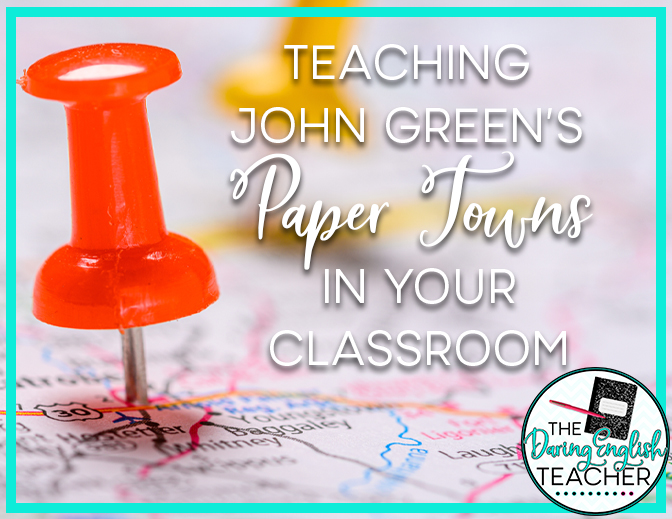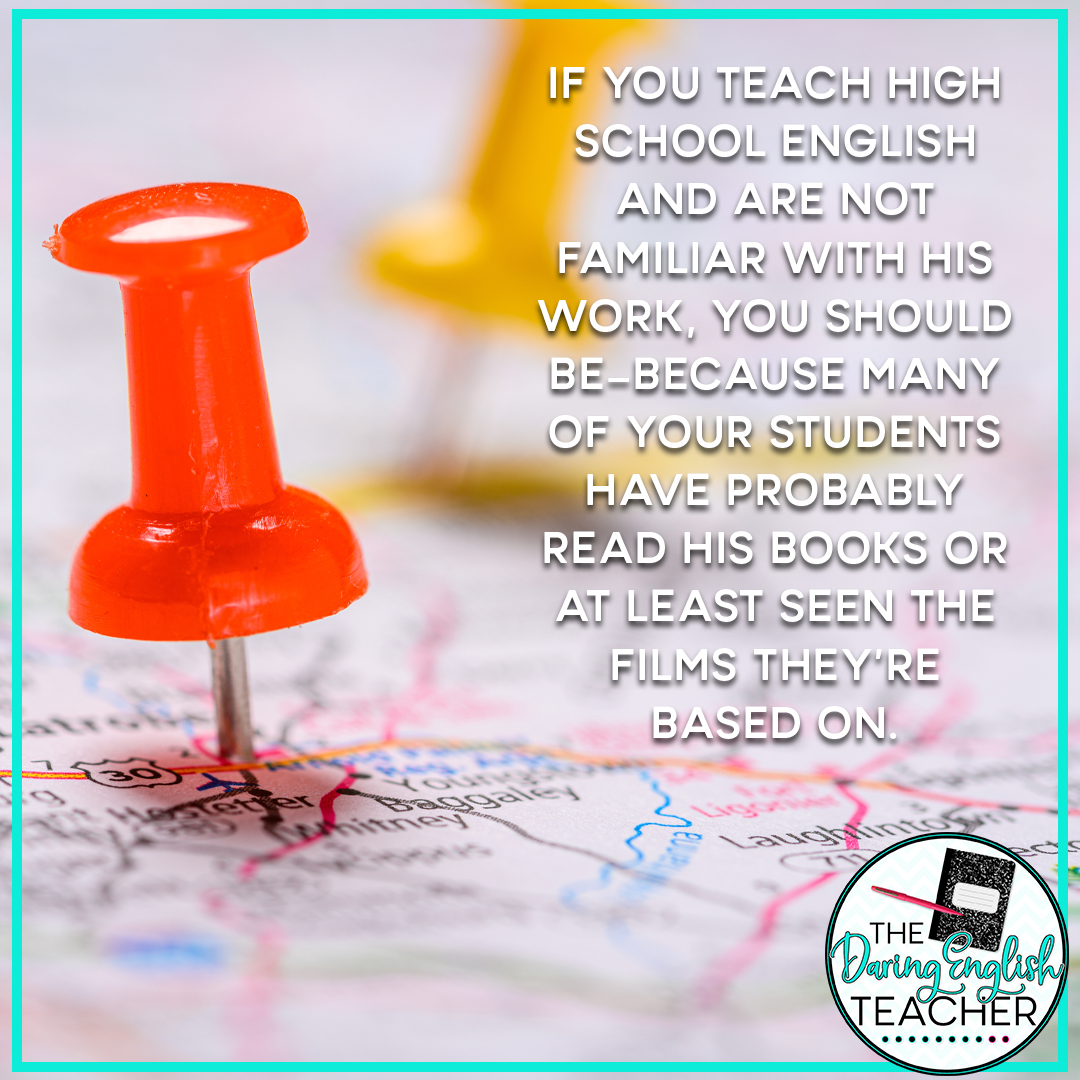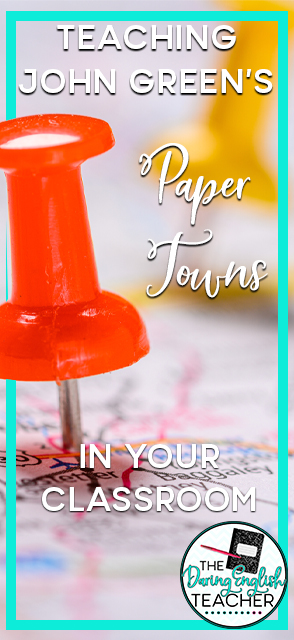John Green is the Shakespeare of contemporary YA. Actually, he’s more like The Beatles of contemporary YA, everything he writes is a hit. If you teach high school English and are not familiar with his work, you should be—because many of your students have probably read his books or at least seen the films they’re based on.
Of course, it’s difficult for teachers to get the funding and permission to incorporate a contemporary novel into the curriculum. Because of that, a novel such as Paper Towns might function best as an option among several books you provide your students to choose from for a lit circle project. Either way, here are two strategies for teaching the novel. While these might function best as full-class lessons/projects, they can be used as jumping-off points for individual assignments as well.
The Walt Whitman Focus
Paper Towns is a little bit like The Da Vinci Code for teenagers. The novel is a love story/mystery that incorporates popular references (actually cool or hip references) into the clues that will eventually lead our protagonist, Quentin, to track down his childhood friend and bigtime crush, Margo. I parenthetically described the references as cool or hip because they are not typical teenage interests, but Margo is anything but an average teen. She’s rebellious, independent, creative, and endlessly curious. She leaves her clues behind via a Woody Guthrie poster, a Billy Bragg’s album, and a copy of Walt Whitman’s Leaves of Grass. Her classmates revere margo for how cool she is but when Quentin and his two friends listen to Guthrie and read Whitman, trying to understand their missing friend, they scrunch up their noses, confused at what Margo could have found interesting in all this noise. And this is why I think Paper Towns could be a great way to get your students to take Whitman seriously.
Quentin and his friends are much more typical than Margo, and so the majority of your students will relate with them when you hand them a copy of “Song of Myself” to read (this poem is the primary reference used in Paper Towns). Quentin doesn’t understand the poem at first and becomes frustrated, the way many people (not just teens) become when attempting a difficult read. This leads to one of the best passages in the novel when Quentin tells his English teacher that Margo left this book for him to find but that he can’t make sense of it. His teacher tells Quentin:
[. . .] I think that is precisely what Whitman would have wanted. For you to see ‘Song of Myself’ not just as a poem but as a way into understanding another. But I wonder if maybe you have to read it as a poem, instead of just reading these fragments for quotes and clues. I do think there are some interesting connections between the poet in ‘Song of Myself’ and Margo Spiegelman—all that wild charisma and wanderlust. But a poem can’t do its work if you only read snippets of it.
This passage is brilliant because it works on two levels. 1) The literal connection it has to the characters in the story—but 2) it also functions as a sort of allegory for why so many people struggle to read poetry—they’re too busy looking for the “meaning” to appreciate the poem for what it is, a poem. This is an excellent sentiment to share with your students and can serve as a terrific way to get your students to appreciate poetry. A fun twist would be to have students find other poems that might work in the context of the novel.
The Feminist Analysis
Most people do not encounter feminist analyses until college, and even then, it might be limited to a women’s history course or a women’s literature course, which men rarely sign up for voluntarily. This is why it’s so important to teach feminist analyses in high school.
Paper Towns was published in 2008, and popular media has become much more sensitive to sexism and gender-tropes these past 11 years, but that doesn’t mean that this novel shouldn’t be criticized as if it came out today (the film was released only four years ago). Chinua Achebe wrote an essay in which he argued that we should continue to teach Conrad’s Heart of Darkness not despite of its racism but because of its racism. There is immense educational value in studying why a work that is seen as offensive now was not seen as offensive when it was first published.
Paper Towns employees the type of sexism and gender-tropes found on TV shows such as The Big Bang Theory. One character might gently criticize another character for their bad behavior, but nothing ever comes of it, no change ever occurs. In fact, in Paper Towns, the novel’s resident adorkable-misogynist, Ben, is actually rewarded for his sexist behavior (referring to all women as “honeybunnies” among other things) by getting the cliched “hottest girl in school”—as if she were a prize to be acquired. Despite how sexist this storyline is, it’s also one we have encountered numerous times. So, ask your students, why? Why does this remain so popular? Why is it problematic? Why is it specifically problematic that it appears in a novel intended for young readers? This also might be a great time to discuss archetypes – of both the plot and character kind -with your students.
An exciting twist to this would be to have your students read another novel or short story, one written by a woman or non-binary author, and compare how the men and women characters are described and how they interact with one another.
Conclusion
Overall, Paper Towns is a fun and quick read. Apart from the many references to Whitman, and a brief allusion to Moby Dick, this book doesn’t possess anything of education value on its surface. I can’t in good conscience even say that the prose is well written but, in all fairness, it’s told from the point of view of a teenager. The structure of the novel closely resembles the three-act structure of a feature-length film. This makes for a quick pace but not for a great academic read. On the upside, there is lots of symbolism to play with and discuss and the potential it bears for a scathing feminist analysis is a valuable thing to consider in today’s ever-changing landscape of popular media.
Resources for Independent Reading:




